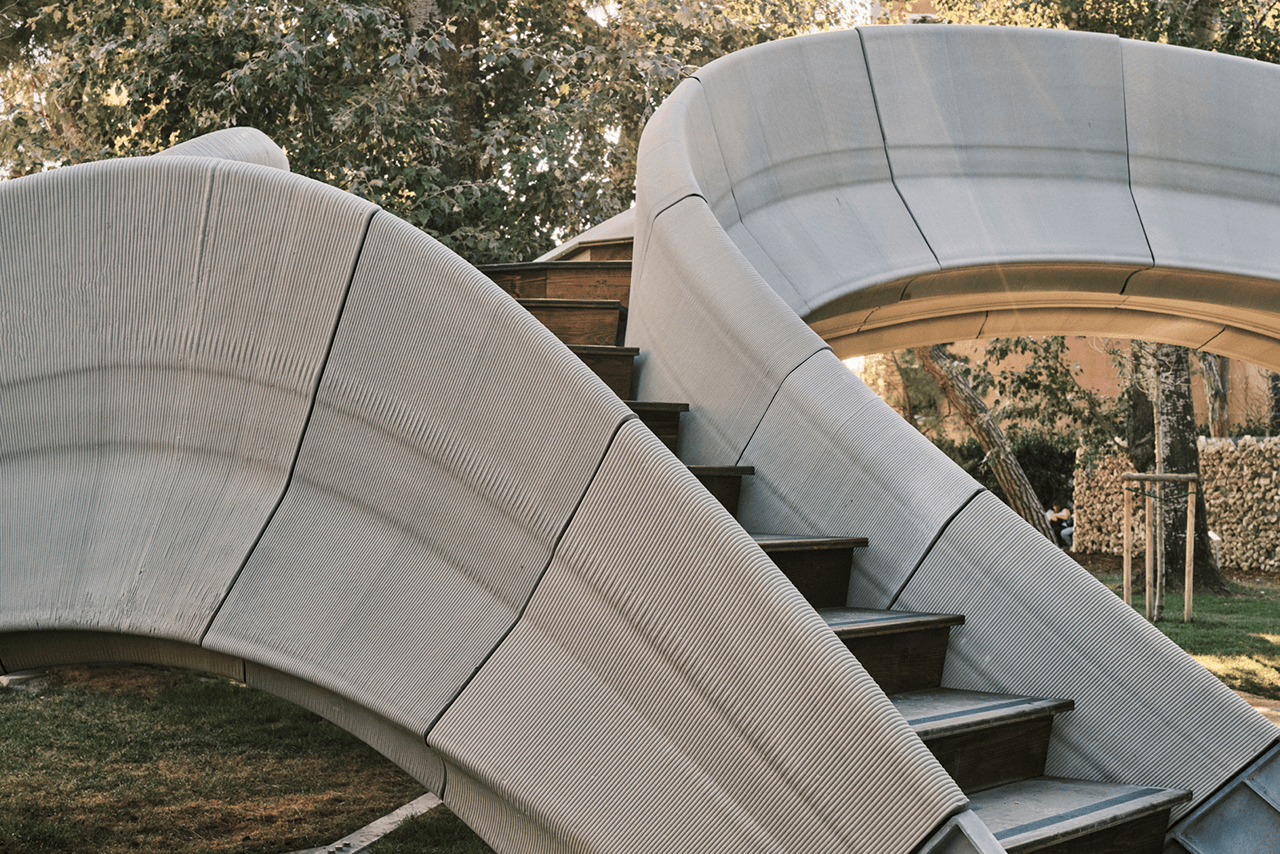Scientists in Singapore have found a way for concrete to absorb CO2 instead of emitting it. Could this invention finally make construction part of the climate solution?
I almost skipped the press release. The headline isn't particularly enticing: “NTU Singapore scientists develop 3D concrete printing process that captures carbon dioxide.” But something made me take a second look.
The wordy announcement from Nanyang Technological University (NTU) in Singapore refers to a new 3D printing process that involves injecting carbon dioxide into concrete during printing. Although it may sound complicated, chemistry is simple. When carbon dioxide reacts with the concrete mix, it solidifies and becomes trapped within the material. The goal? To reduce the significant carbon footprint of concrete – the building block of modern society is the second most used material in the world and accounts for around 8 percent of global CO2 emissions due to the energy-intensive manufacturing process.

Admittedly, it's difficult to draw attention to carbon-guzzling concrete at a time when bold space adventures, sleek gadgets and ever-smarter AI are making waves and grabbing headlines. The obvious catches are missing: no prominent founder, no life-changing promise. But behind the university's understated project lies a compelling idea, the undeniable elegance of turning a problem into a solution – it converts concrete production and construction into carbon capture, reversing the plot.
It reminds me of US-Israeli designer Neri Oxman's provocative question: “Is there a world in which driving is better for nature than a world in which there are no cars?” Is there a world where using concrete is better for the environment than using concrete? Not less bad, but actually good?
NTU’s innovation suggests precisely this possibility. The idea is liberating for developers and architects. Imagine being able to design without climate guilt, where every bridge, tower, column and beam is a net good for the environment and actively improves the surrounding area.

What makes this innovation promising is that it combines two frontiers of innovation: carbon capture and 3D printing. While carbon capture has been retrofitted into traditional cement plants, NTU's innovation integrates the mitigation method into the production process itself. The technology also ensures superior concrete: it is stronger, easier to print, and sequesters more carbon than other types of 3D printed concrete. This means faster construction with less material and labor. This method breaks new ground and enables a design that optimizes shape and carbon absorption in a way that would not be possible with traditional casting.
But here lies the challenge. While digital innovation advances with weekly breakthroughs, the construction industry advances and operates in decade-long cycles. Concrete remains largely locked into the processes of the 20th century. But the urgency of climate change requires rapid and comprehensive transformation.
The NTU team is already moving forward with their work while waiting for a patent, researching how to capture exhaust gases instead of pure carbon dioxide. But breakthroughs that excite only industry insiders only partially drive the change we so desperately need. Where are the visions bold enough to inspire broader imaginations? The kind of ambition that excites the rest of us?
Maybe it's time to take a page from the big tech playbook. Instead of asking, “How can we make concrete five percent more environmentally friendly?” we should ask, “What if concrete made the planet better, not worse?” The transition from containment to mission – from villain to hero – in climate history. That's exciting.
Yvonne Xu is a Singapore-based design writer and regular contributor to Monocle. Want more concrete ideas? Find debate about the material here and read about Carlo Scarpa's expert use of the material here.
